Related Research Articles
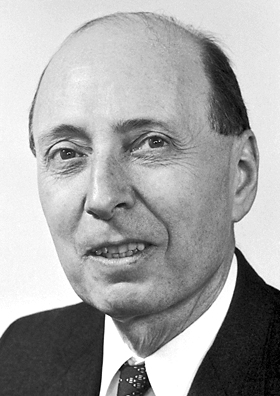
Eugene Paul "E. P." Wigner was a Hungarian-American theoretical physicist who also contributed to mathematical physics. He received the Nobel Prize in Physics in 1963 "for his contributions to the theory of the atomic nucleus and the elementary particles, particularly through the discovery and application of fundamental symmetry principles".

Sputnik 1 was the first artificial Earth satellite. It was launched into an elliptical low Earth orbit by the Soviet Union on 4 October 1957 as part of the Soviet space program. It sent a radio signal back to Earth for three weeks before its three silver-zinc batteries ran out. Aerodynamic drag caused it to fall back into the atmosphere on 4 January 1958. The world's first observation was made at the school observatory in Rodewisch (Saxony).

Edward Teller was a Hungarian-American theoretical physicist who is known colloquially as "the father of the hydrogen bomb" and one of the creators of the Teller–Ulam design. Teller was known for his scientific ability and his difficult interpersonal relations and volatile personality.
Project Vanguard was a program managed by the United States Navy Naval Research Laboratory (NRL), which intended to launch the first artificial satellite into low Earth orbit using a Vanguard rocket. as the launch vehicle from Cape Canaveral Missile Annex, Florida.

The National Science Foundation (NSF) is an independent agency of the United States federal government that supports fundamental research and education in all the non-medical fields of science and engineering. Its medical counterpart is the National Institutes of Health. With an annual budget of about $8.3 billion, the NSF funds approximately 25% of all federally supported basic research conducted by the United States' colleges and universities. In some fields, such as mathematics, computer science, economics, and the social sciences, the NSF is the major source of federal backing.
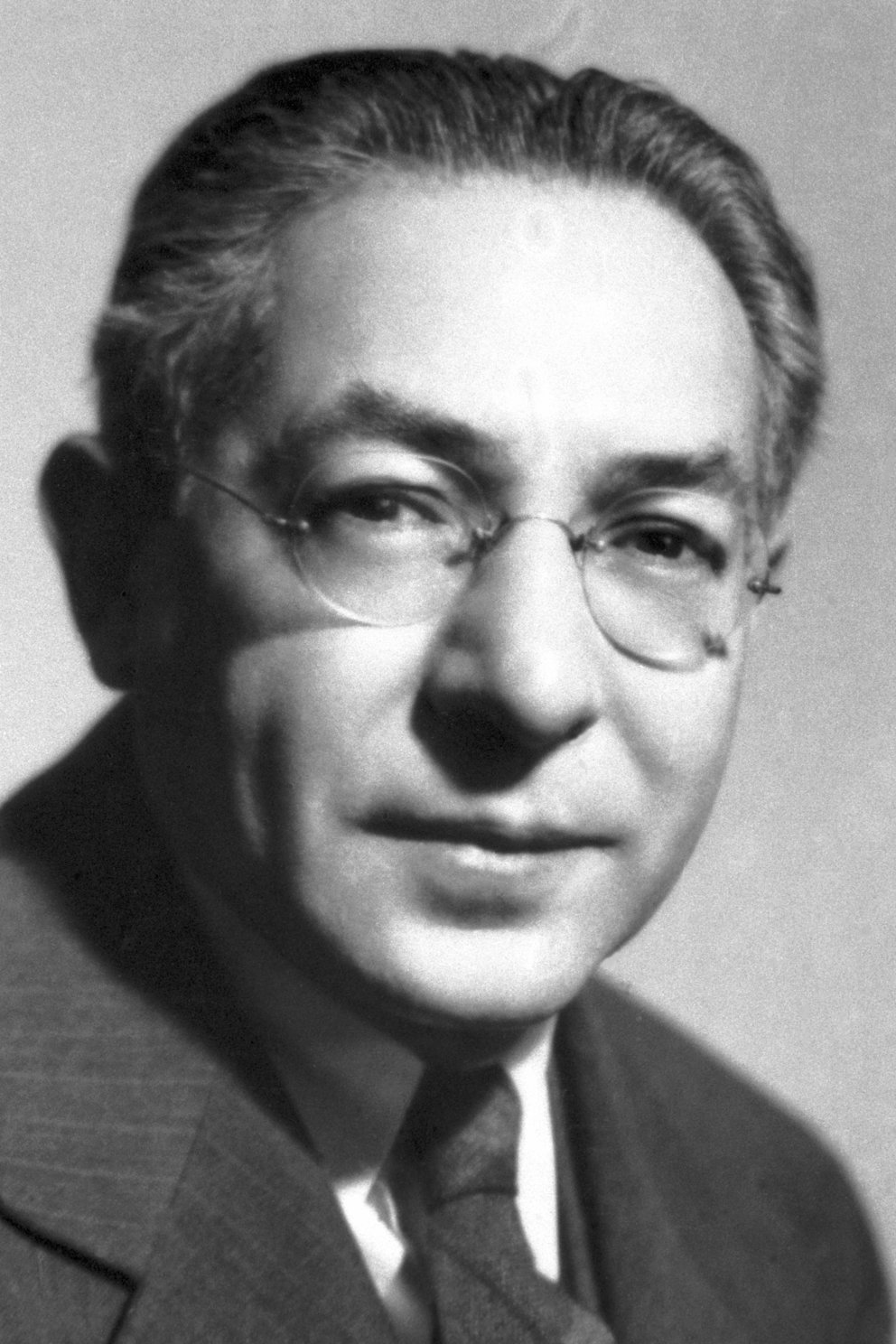
Isidor Isaac Rabi was an American physicist who won the Nobel Prize in Physics in 1944 for his discovery of nuclear magnetic resonance, which is used in magnetic resonance imaging (MRI). He was also one of the first scientists in the United States to work on the cavity magnetron, which is used in microwave radar and microwave ovens.
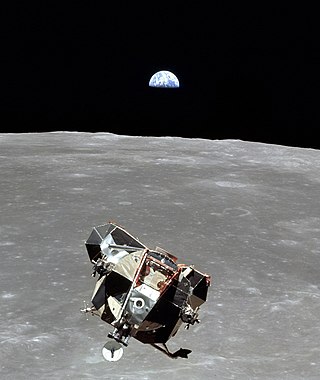
Science and technology in the United States has a long history, producing many important figures and developments in the field. The United States of America came into being around the Age of Enlightenment, an era in Western philosophy in which writers and thinkers, rejecting the perceived superstitions of the past, instead chose to emphasize the intellectual, scientific and cultural life, centered upon the 18th century, in which reason was advocated as the primary source for legitimacy and authority. Enlightenment philosophers envisioned a "republic of science," where ideas would be exchanged freely and useful knowledge would improve the lot of all citizens.

The Sputnik crisis was a period of public fear and anxiety in Western nations about the perceived technological gap between the United States and Soviet Union caused by the Soviets' launch of Sputnik 1, the world's first artificial satellite. The crisis was a significant event in the Cold War that triggered the creation of NASA and the Space Race between the two superpowers. The satellite was launched on October 4, 1957, from the Baikonur Cosmodrome. This created a crisis reaction in national newspapers such as The New York Times, which mentioned the satellite in 279 articles between October 6, 1957, and October 31, 1957.

James Alfred Van Allen was an American space scientist at the University of Iowa. He was instrumental in establishing the field of magnetospheric research in space.

Hugh Everett III was an American physicist who, in his 1957 PhD thesis, proposed what is now known as the many-worlds interpretation (MWI) of quantum mechanics.
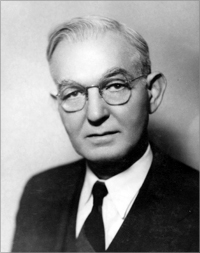
George Braxton Pegram was an American physicist who played a key role in the technical administration of the Manhattan Project. He graduated from Trinity College in 1895, and taught high school before becoming a teaching assistant in physics at Columbia University in 1900. He was to spend the rest of his working life at Columbia, taking his doctorate there in 1903 and becoming a full professor in 1918. His administrative career began as early as 1913 when he became the department's executive officer. By 1918, he was Dean of the Faculty of Applied Sciences but he resigned in 1930 to relaunch his research activities, performing many meticulous measurements on the properties of neutrons with John R. Dunning. He was also chairman of Columbia's physics department from 1913 to 1945.

James Rhyne Killian Jr. was the 10th president of the Massachusetts Institute of Technology, from 1948 until 1959.
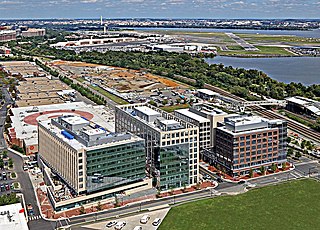
The Institute for Defense Analyses (IDA) is an American non-profit corporation that administers three federally funded research and development centers (FFRDCs) – the Systems and Analyses Center (SAC), the Science and Technology Policy Institute (STPI), and the Center for Communications and Computing (C&C) – to assist the United States government in addressing national security issues, particularly those requiring scientific and technical expertise. It is headquartered in Alexandria, Virginia.
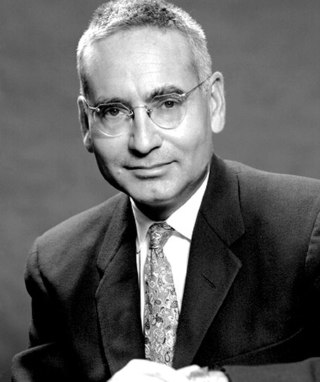
Alvin Martin Weinberg was an American nuclear physicist who was the administrator of Oak Ridge National Laboratory (ORNL) during and after the Manhattan Project. He came to Oak Ridge, Tennessee, in 1945 and remained there until his death in 2006. He was the first to use the term "Faustian bargain" to describe nuclear energy.

Operation Moonwatch was an amateur science program formally initiated by the Smithsonian Astrophysical Observatory (SAO) in 1956. The SAO organized Moonwatch as part of the International Geophysical Year (IGY) which was probably the largest single scientific undertaking in history. Its initial goal was to enlist the aid of amateur astronomers and other citizens who would help professional scientists spot the first artificial satellites. Until professionally staffed optical tracking stations came on-line in 1958, this network of amateur scientists and other interested citizens played a critical role in providing crucial information regarding the world's first satellites.
Jerrold Reinach Zacharias was an American physicist and institute professor at the Massachusetts Institute of Technology, as well as an education reformer. His scientific work was in the area of nuclear physics.

The National Aeronautics and Space Administration (NASA) was created in 1958 from the National Advisory Committee for Aeronautics (NACA), and other related organizations, as the result of the Space Race between the United States and the Soviet Union in the 1950s.

Edward Creutz was an American physicist who worked on the Manhattan Project at the Metallurgical Laboratory and the Los Alamos Laboratory during World War II. After the war he became a professor of physics at the Carnegie Institute of Technology. He was Vice President of Research at General Atomics from 1955 to 1970. He published over 65 papers on botany, physics, mathematics, metallurgy and science policy, and held 18 patents relating to nuclear energy.

Stephen Joseph Lukasik was an American physicist who served in multiple high-level defense and scientific related positions for advancing the technologies and techniques for national defense and the detection and control of diverse types of weapons of mass destruction, especially nuclear devices. He was the second longest serving Director of DARPA - the Defense Advanced Research Projects Agency – during which numerous new technologies including packet and internet protocols were developed. He was also the first chief scientist of the Federal Communications Commission where he created its Office of Science and Technology and which facilitated the commercial deployment of new technology that included spread spectrum technology.
The Princeton University Department of Physics is an academic department dedicated to research and teaching at Princeton University. The associated faculty members, researchers, and students have been recognized for their research contributions, having been awarded 19 Nobel Prizes, four National Medals of Science, and two Wolf Prizes in Physics. Notable professors, researchers, and graduate students affiliated with the department include Richard Phillips Feynman, Joseph H. Taylor, Jim Peebles, Eugene P. Wigner, and John von Neumann. In addition, the department offers degree programs for bachelor's students (A.B.) and doctoral students (Ph.D.).
References
- 1 2 3 4 5 6 7 8 9 10 11 12 13 14 15 16 17 18 19 20 21 22 Aaserud, Finn (1995). "Sputnik and the "Princeton Three:" The National Security Laboratory That Was Not to Be". Historical Studies in the Physical and Biological Sciences. 25 (2): 185–239. doi:10.2307/27757744. JSTOR 27757744.
- ↑ Morse, Philip McCord (1978). In at the Beginning's: A Physicist's Life. Cambridge, Massachusetts: MIT Press. pp. 244–261, 287.
- ↑ Wilson to Killian, 4 May 1955, folder IDA, MITA-OP
- ↑ Killian to Wilson, 11 Oct 1956, Folder IDA, MITA_OP
- ↑ McDougall, WalterA. (1985). The heavens and earth: A political history of the space age . New York. pp. 131, 150, 168.
{{cite book}}: CS1 maint: location missing publisher (link) - ↑ Galison, Peter; Bernstein, Barton (1989). "In Any Light: Scientists and the Decision to Build the Superbomb, 1952-1954". Historical Studies in the Physical and Biological Sciences. 19 (2): 267–347. doi:10.2307/27757627. JSTOR 27757627.
- ↑ Digest of education statistics. Washington, D.C.: National Center for education Statistics. 1992. pp. 107, 181, 291.
- 1 2 The New York Times. January 14, 1958.
{{cite news}}: Missing or empty|title=(help) - ↑ Galison, Peter; Hevly, Bruce William (1992). "Du Pont and the Management of Large-scale Research and Development". Big Science: The Growth of Large-scale Research. Stanford, CA: Stanford University Press. pp. 236–261.